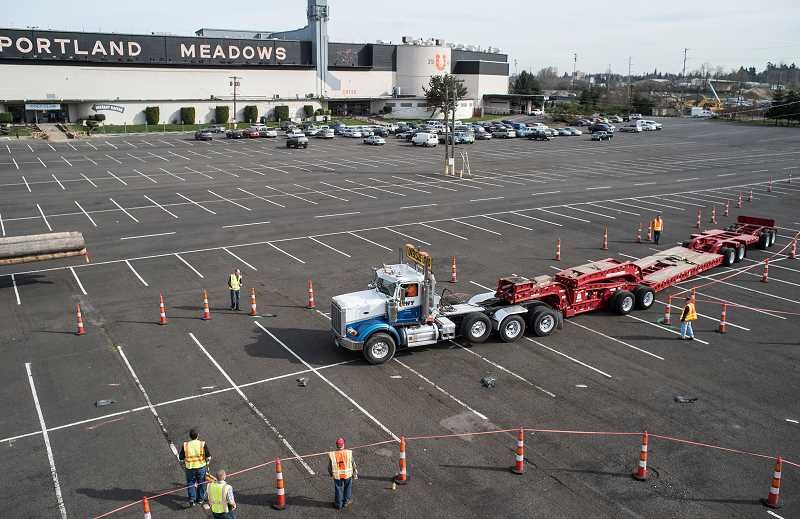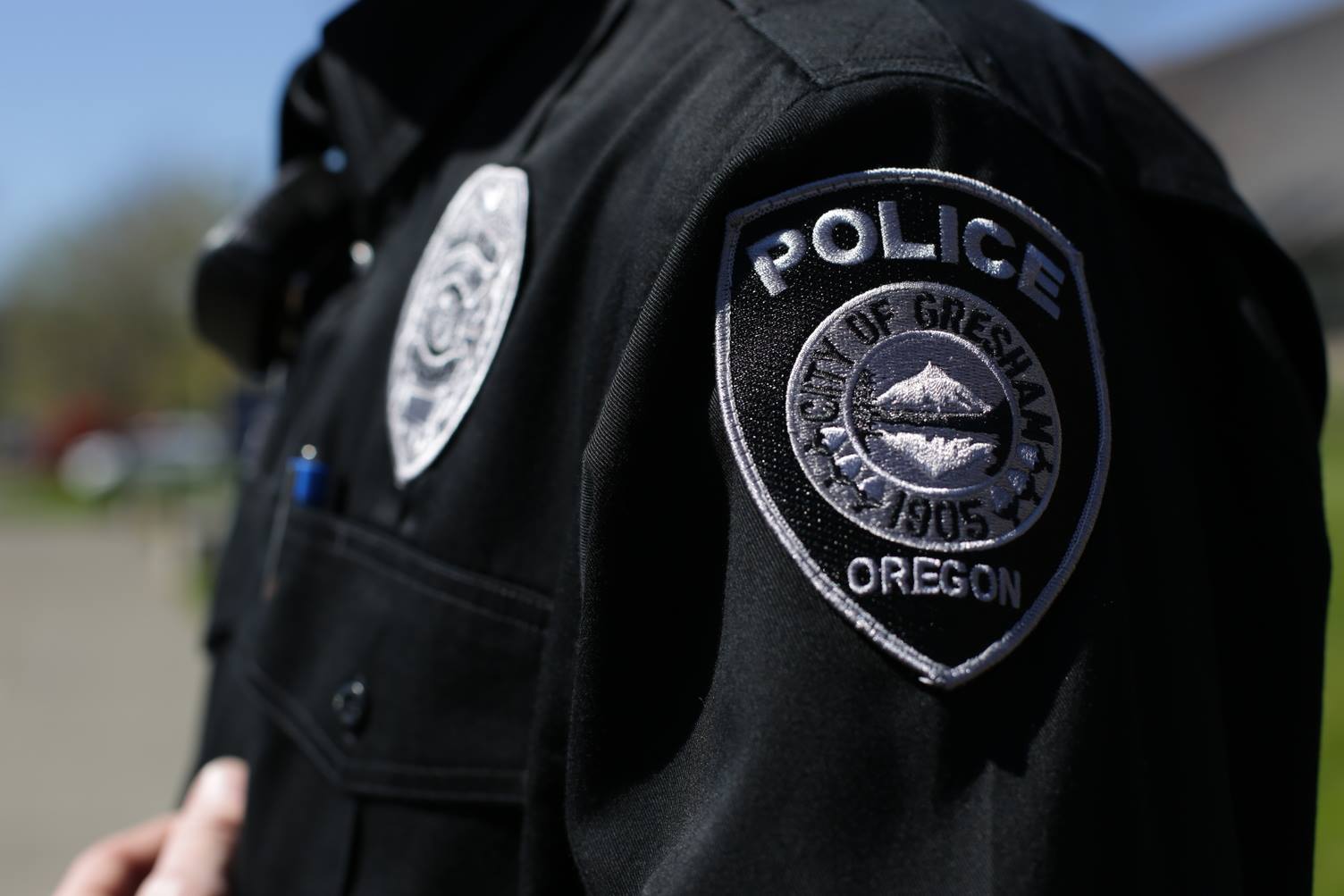Oregon proposes a roundabout way to increase traffic safety
Published 12:00 am Thursday, March 12, 2015

- Randy Wolfe drives his 105-foot long Peterbilt through a model of a roundabout design proposed for Highway 47. The truck comes from Highway Heavy Hauling , a Portland-based company co-owned by two Banks natives, sister and brother Kristine and Carson Kennedy.
The tragic deaths of Pacific University freshmen Kiden Dilla and Ayan Osman helped prompt a strange parade of giant trucks for a “truck rodeo” at Portland Meadows racehorse track last Thursday.
Trending
The Portland teenagers and best friends were killed last April when their car was struck by a truck while they were turning left onto Highway 47 from Southwest Verboort Road near Forest Grove. The intersection was still marked by a handmade memorial of crosses and flowers last weekend — for Dilla, Ayan and a third young woman who died in the same way eight years ago.
The fatal accident focused attention on a proposal by the Oregon Department of Transportation to replace the heavily traveled intersection — which does not have a traffic light — with a roundabout, a circular design that rotates vehicles around and through intersections without using lights. Construction could start early next year and be completed in 18 months.
According to ODOT Senior Urban Design Engineer Rich Crossler-Laird, a roundabout would increase safety without creating as much congestion as a stoplight. The need is growing as traffic increases on Highway 47, a major connection from U.S. 26 though the Cornelius-Forest Grove area to McMinnville and the surrounding Yamhill County wineries. There have been nearly 40 accidents at the intersection during the past 10 years.
Trending
Ironically, a roundabout already exists at the intersection of Verboort and Martin Road just one mile to the east. ODOT also has proposed another roundabout just south of Verboort Road, where Highway 47 intersects with David Hill Road.
Crossler-Laird and other ODOT employees spent most of March 5 testing a full-size mock-up of the proposed roundabout designs in the large parking lot at Portland Meadows, just off Interstate 5 in North Portland. They were joined by contractors, Washington County transportation officials, and representatives of several trucking companies, who brought along some of their largest rigs.
ODOT staged its first-ever truck rodeo (with smaller trucks) at the Deschutes County Fairgrounds the previous weekend to test a proposed roundabout for U.S. 20 (Oregon 126) near Sisters.
It tested the U.S. 20 roundabout again Thursday morning using the big trucks, followed by afternoon tests for the Oregon 47 roundabouts.
The Highway 47 roundabout would be 180 feet in diameter. Tests were staged with traffic cones standing in for hard shoulders and sandbags for soft shoulders.
The largest truck and trailer at the test was owned by Wilhelm Trucking. It is used to haul heavy construction equipment, including earth-moving machinery. At 130 feet long and 18 feet wide, it is only allowed on the roads after obtaining permits for authorized routes. Under the expert hands of an experienced driver, the massive rig traveled both directions through the Highway 47 test course without crushing any of the cones — meaning the configuration could work. Other trucks to pass the tests included a fully loaded log truck and a truck hauling a manufactured home.
“The test went well. The trucks were able to make it through the course even better than our computer models predicted,” said Steve Litchfield, a senior project manager with the CH2M Hill consulting firm working on the project.
That means the current design will work for the vast majority of vehicles, Crossler-Laird said. But to accommodate rare cases when even larger vehicles might come through, engineers are proposing the roundabout be located just east of the current intersection, leaving a straight stretch of highway that could be cordoned off until an unusually monstrous load needed to pass through and the road could be briefly reopened, he said.
Trucks like those of Hillsboro-based Omega Morgan, which carry electrical transformers, might fall into that category, Crossler-Laird said.
According to Litchfield, the next step is to compile the test results into a report and present it to the Mobility Committee, an ODOT advisory panel representing the freight industry. If committee members approve the project, ODOT will finalize the construction schedule and budget.
ODOT first began researching roundabouts in 1997 and produced a “Modern Roundabouts for Oregon” report in June 1998. At the time, roundabouts were widely used in foreign countries and had recently been built in Florida, Maryland and Vermont.
ODOT built two on state highways in 2000, one in Astoria and the other in Bend. But the roundabout effort stalled after that, in part because of organizational changes that decentralized ODOT, Crossler-Laird said.
Meanwhile, local governments built roundabouts on smaller roads throughout Oregon. And Washington state installed more than 100 on its highways.
The Oregon Legislature later asked for more study of roundabouts and required ODOT to involve stakeholders, including the freight industry, in its decisions.
Despite its size, the Portland Meadows parking lot was almost too small for the test. The largest trucks had trouble turning around after leaving the course at the north end. But the expert drivers were able to get their rigs back to the starting lines to complete the tests by the end of the day.







